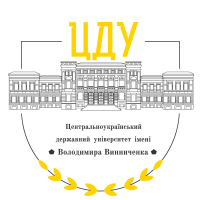UKRAINIAN LANDS IN THE LITHUANIAN-MOSCOW WAR 1507–1508
DOI:
https://doi.org/10.32782/cusu-hist-2024-1-10Keywords:
Lithuania, M. Glynskyi, Moscow principality, Moscow-Lithuanian wars, SevershchynaAbstract
The article examines the next stage of Moscow’s expansion in relation to Ukrainian lands at the beginning of the 16th century. After the end of the Lithuanian-Moscow war of 1501–1503, considerable territories came under the power of Moscow, which had important strategic importance and provided Moscow with a number of economic advantages. However, both sides considered the war unfinished, and clashes began on the new Russian-Lithuanian border immediately after the conclusion of the armistice, which later led to another Lithuanian-Moscow war. At the end of April 1507, the Moscow army marched on Lithuania, and in autumn made an unsuccessful attempt to capture Krychev and Mstislavl. However, the cities put up a determined resistance and the invaders were forced to abandon their plans and return to Muscovy. Thus, the first stage of the war did not bring the desired results to either side. The second stage of the war of 1507–508 was connected with the rebellion of M. Glynskyi, who enlisted the support of Moscow and in January 1508 devastated Slutsk and Kopilsk volosts and captured the cities of Mozyr and Bobruisk. In the spring of 1508, the Muscovites simultaneously launched an offensive in three directions: from Novgorod and from Moscow to Smolensk, from Velikie Luky to Polotsk, and V. Shemyachich went to help M. Glynskyi. However, Moscow’s support did not help the latter capture any major cities, except for Mozyry and Drutsk. In August, Lithuanian troops launched a counteroffensive on Severshchyna, captured Bila, Toropets and Dorohobuzh fortresses, but could not hold them. In the early autumn of 1508, both sides were exhausted and needed rest. Therefore, already on October 8, an “eternal peace” was signed between Lithuania and the Moscow principality, according to which Severshchyna was legally attached to Moscow, and part of the volosts captured by the Moscow troops during the hostilities of 1507–1508, including the possessions of the Glynskyi, were returned to Lithuania. which were generously compensated by Basil III. Despite the “eternity” of this agreement, the Muscovite- Lithuanian wars for Russian lands did not stop until 1569.
References
История Украинской ССР, 1982. Т. 2. Киев.
Карамзин Н. И., 1852. История государства Российского. Том VІІ и VІІІ. Издание Александра Смирдина. Санкт-Петербургъ.
Кром М. М., 2010. Меж Русью и Литвой: Западнорусские земли в системе русско-литовских отношений конца XV – первой трети XVI вв. М.
Мельник Л. Г., 1980. Зміцнення українсько-російських політичних та економічних зв’язків після падіння ординського ярма. Український історичний журнал. № 9. 80–85.
Похлебкин В. В., 1995. Внешняя политика Руси, России и СССР за 1000 лет в именах, датах, фактах: Справочник. Вып. 2.: Войны и мирные договоры. М.
Русина О., 1998. Сіверська земля у складі Великого князівства Литовського. Київ.
Тарас А. Е., 2018. Войны Московской Руси с Великим княжеством Литовским и Речью Посполитой. Мн.








